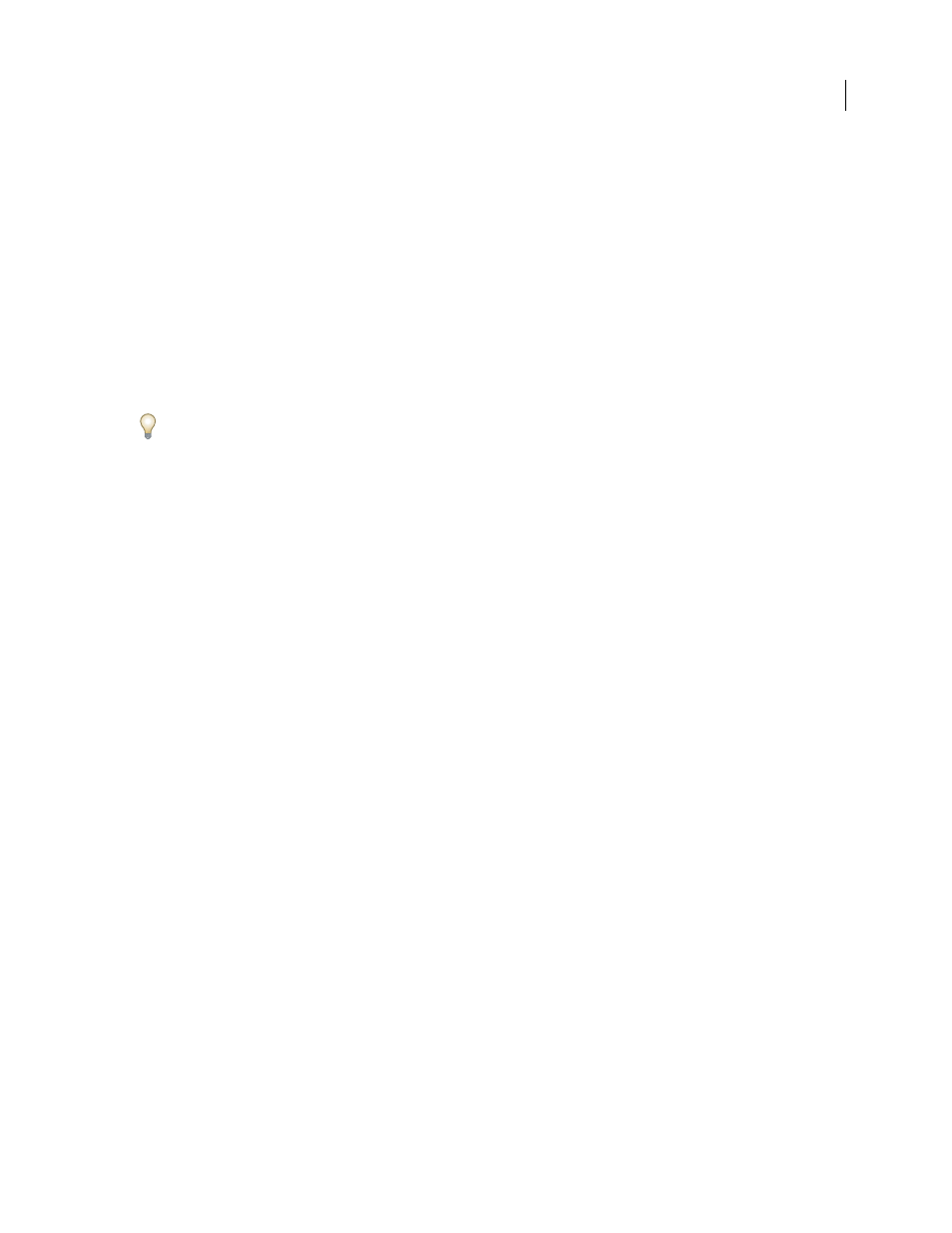Noise filters – Adobe Photoshop CS3 User Manual
Page 398

PHOTOSHOP CS3
User Guide
391
Ripple
Creates an undulating pattern on a selection, like ripples on the surface of a pond. For greater control, use
the Wave filter. Options include the number and size of ripples.
Shear
Distorts an image along a curve. Specify the curve by dragging the line in the box. You can adjust any point
along the curve. Click Default to change the curve back to a straight line. In addition, you choose how to treat undis-
torted areas.
Spherize
Gives objects a 3D effect by wrapping a selection around a spherical shape, distorting the image and
stretching it to fit the selected curve.
Twirl
Rotates a selection more sharply in the center than at the edges. Specifying an angle produces a twirl pattern.
Wave
Works much as the Ripple filter does, but with greater control. Options include the number of wave gener-
ators, wavelength (distance from one wave crest to the next), height of the wave, and wave type: Sine (rolling),
Triangle, or Square. The Randomize option applies random values. You can also define undistorted areas.
To replicate wave results on other selections, click Randomize, set Number Of Generators to 1, and set the minimum
and maximum Wavelength and Amplitude parameters to the same value.
ZigZag
Distorts a selection radially, depending on the radius of the pixels in your selection. The Ridges option sets
the number of direction reversals of the zigzag from the center of the selection to its edge. You also specify how to
displace the pixels: Pond Ripples displaces pixels to the upper left or lower right, Out From Center displaces pixels
toward or away from the center of the selection, and Around Center rotates pixels around the center.
Noise filters
The Noise filters add or remove noise, or pixels with randomly distributed color levels. This helps to blend a selection
into the surrounding pixels. Noise filters can create unusual textures or remove problem areas, such as dust and
scratches.
Add Noise
Applies random pixels to an image, simulating the effect of shooting pictures on high-speed film. You can
also use the Add Noise filter to reduce banding in feathered selections or graduated fills or to give a more realistic
look to heavily retouched areas. Options for noise distribution include Uniform and Gaussian. Uniform distributes
color values of noise using random numbers between 0 and plus or minus the specified value, creating a subtle effect.
Gaussian distributes color values of noise along a bell-shaped curve, creating a speckled effect. The Monochromatic
option applies the filter to only the tonal elements in the image without changing the colors.
Despeckle
Detects the edges in an image (areas where significant color changes occur) and blurs all of the selection
except those edges. This blurring removes noise while preserving detail.
Dust & Scratches
Reduces noise by changing dissimilar pixels. To achieve a balance between sharpening the image
and hiding defects, try various combinations of Radius and Threshold settings. Or apply the filter to selected areas
in the image. See also “Apply the Dust And Scratches filter” on page 397.
Median
Reduces noise in an image by blending the brightness of pixels within a selection. The filter searches the
radius of a pixel selection for pixels of similar brightness, discarding pixels that differ too much from adjacent pixels,
and replaces the center pixel with the median brightness value of the searched pixels. This filter is useful for elimi-
nating or reducing the effect of motion on an image.
Reduce Noise
Reduces noise while preserving edges based on user settings affecting the overall image or individual
channels. See “Reduce image noise and JPEG artifacts” on page 207.
